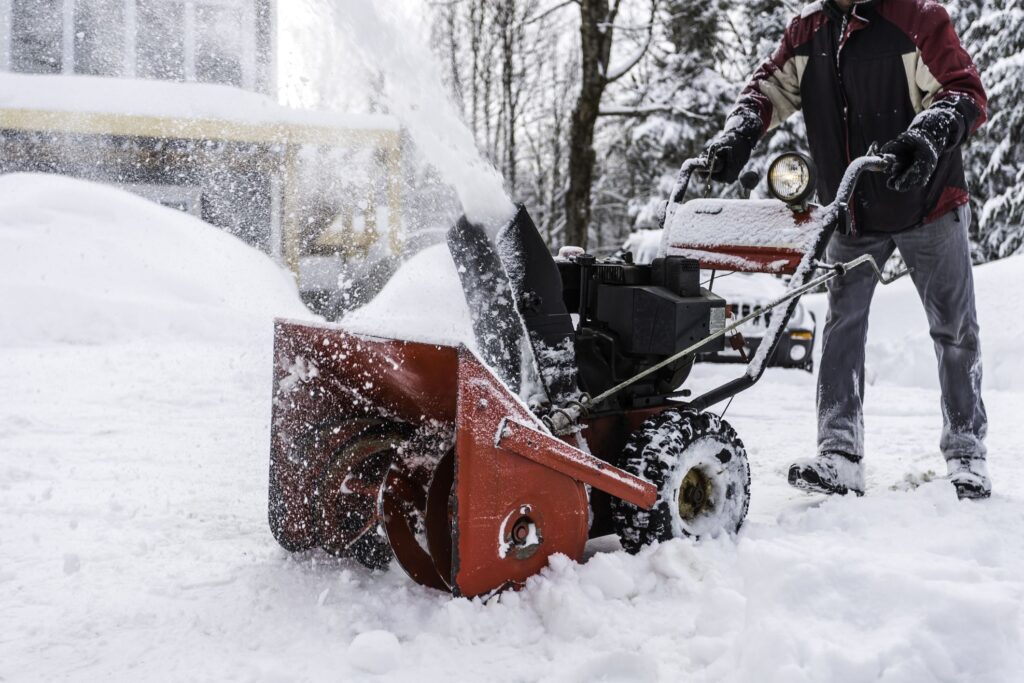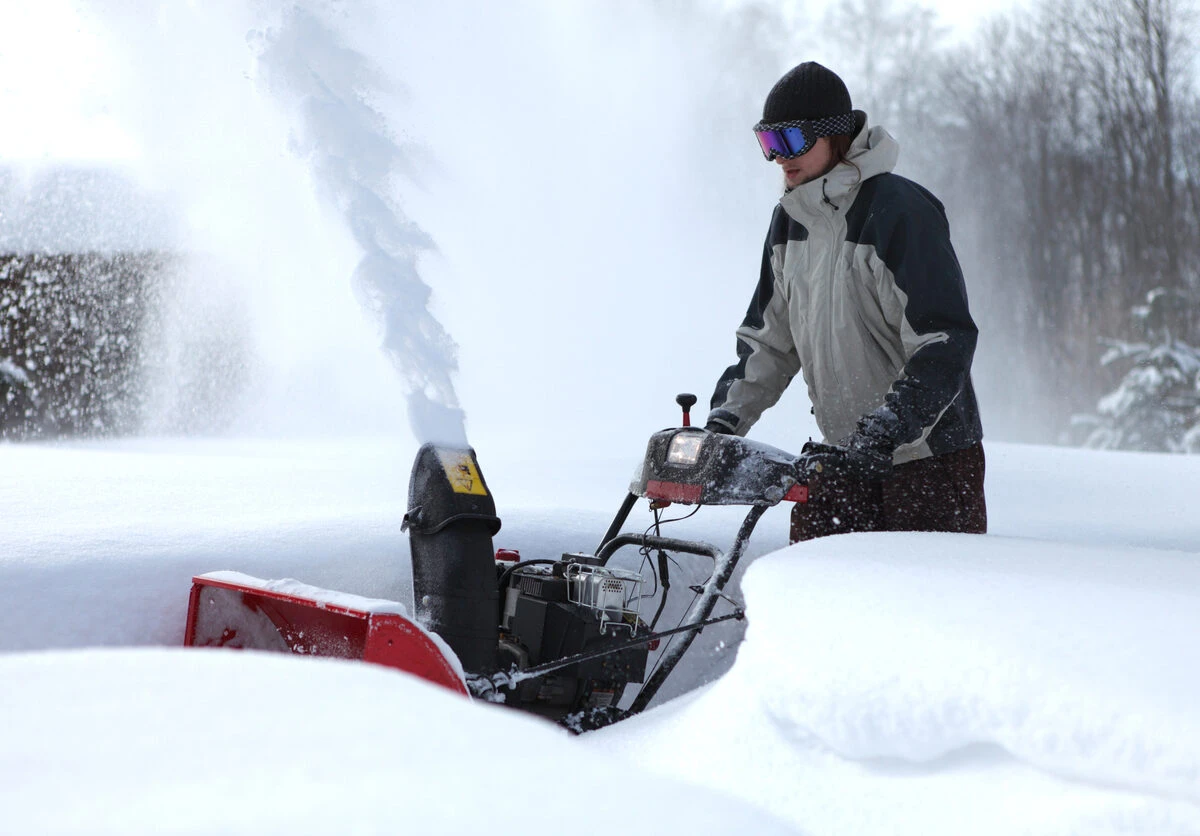In this article, we will discuss some practical steps that you can take with your snow blower after using it. We will explore how to properly clean and maintain the machine, as well as storage tips for the off-season. By following these guidelines, you can ensure the longevity and efficiency of your snow blower, so let’s get started!

This image is property of i.ytimg.com.
Cleaning the Snow Blower
Removing Excess Snow
After using a snow blower to clear out snow from your driveway or walkways, it’s essential to clean it properly to ensure its longevity and optimal performance in the future. The first step in this process is to remove any excess snow that may have accumulated on the machine during usage. Use a snow shovel or brush to gently remove the snow from the exterior surfaces of the blower, making sure to clear out any snow that may be clogging the chute or auger.
Disconnecting the Power Source
Once you have cleared away the excess snow, it’s important to disconnect the power source of the snow blower. This will help prevent any accidental start-ups or injuries during the cleaning process. If your snow blower is electric, unplug it from the power outlet. For gas-powered models, switch off the ignition and remove the spark plug wire to ensure complete disconnection from any power source.
Cleaning the Chute and Auger
Next, focus on cleaning the chute and auger of the snow blower. The chute is the part of the blower that directs the snow away from the machine, while the auger is responsible for scooping up the snow and propelling it through the chute. Start by using a brush or gloved hand to remove any remaining snow or debris from these areas. Be cautious when working around the blades of the auger, as they can be sharp. Once the snow and debris have been cleared, use a hose or pressure washer to thoroughly rinse the chute and auger and remove any remaining dirt or grime. Allow the snow blower to dry completely before moving on to the next step.
Inspecting the Snow Blower
Checking for Damage
After cleaning the snow blower, it’s crucial to inspect it for any signs of damage. Look for cracks, dents, or other visible damage on the exterior of the machine. Pay close attention to the chute, auger, and handlebars, as these are the parts that are most susceptible to wear and tear. Additionally, inspect the wheels and axles for any damage that may affect the blower’s maneuverability. If you notice any significant damage, it’s recommended to consult a professional or the manufacturer for repairs or replacement parts.
Inspecting the Belts and Cables
In addition to checking for external damage, it’s important to inspect the belts and cables of the snow blower. These parts play a crucial role in the blower’s operation and should be in good condition for optimal performance. Check the belts for any signs of fraying, cracking, or excessive wear. If any issues are detected, replace the belts as soon as possible to avoid further damage. Similarly, inspect the cables for any damage or signs of wear and tear. Replace any damaged cables to ensure proper functionality of the snow blower.

This image is property of www.bhg.com.
Maintenance and Storage
Changing the Oil
Regular maintenance of your snow blower is essential to keep it running smoothly. One critical aspect is changing the oil. Over time, the oil in the engine can become dirty or contaminated, affecting the blower’s performance. Refer to the snow blower’s user manual for specific instructions on how to change the oil. Generally, this involves draining the old oil and replacing it with fresh, clean oil. Dispose of the old oil properly, following local regulations. Regular oil changes will help extend the life of your snow blower and keep it functioning efficiently.
Replacing the Spark Plug
Another crucial maintenance task is replacing the spark plug. Over time, spark plugs can become fouled or worn, leading to issues with starting the snow blower. Check the condition of the spark plug and replace it if it appears damaged or excessively dirty. Refer to the user manual for the correct spark plug model for your snow blower. It’s recommended to replace the spark plug at least once per season to ensure reliable starting and optimal performance.
Emptying the Fuel Tank
Before storing the snow blower, it’s important to empty the fuel tank completely. Leaving fuel in the tank for an extended period can lead to clogs and damage to the engine. To empty the tank, run the snow blower until it runs out of fuel. This ensures that no fuel is left inside the tank or fuel lines. Additionally, consider adding a fuel stabilizer to the remaining fuel before running the machine dry. Fuel stabilizers help prevent the fuel from degrading and causing issues when you start the snow blower again in the future.
Storing the Snow Blower
Proper storage is essential to protect your snow blower during the off-season. Store the snow blower in a clean and dry area, away from any potential moisture or extreme temperatures. If possible, cover the snow blower with a waterproof cover or tarp to prevent dust and debris from accumulating on the machine. Additionally, store the blower in an upright position to prevent any leaks or damage to the engine. Taking these steps will help maintain the condition of your snow blower and ensure it’s in optimal working order for the next winter season.

This image is property of cdn.fivestarstorage.biz.
Additional Tips
Sharpening the Auger Blades
To ensure the snow blower’s optimal performance and efficiency, regular maintenance of the auger blades is crucial. Over time, the blades can become dull, making it harder for the blower to effectively clear snow. Sharpen the blades using a grinder or file to ensure they are cutting through the snow cleanly. Follow the manufacturer’s recommendations for blade sharpening intervals, typically once per season or as needed, based on usage.
Checking Tire Pressure
The tire pressure of your snow blower plays a significant role in its maneuverability and stability. Before each use, check the tire pressure and adjust it accordingly. Refer to the user manual for the recommended tire pressure for your specific model. Proper tire pressure ensures better traction on slippery surfaces and improves the overall performance of the snow blower.
Greasing Moving Parts
Greasing the moving parts of your snow blower is another crucial maintenance task. Over time, the moving parts can become dry and lose their lubrication, leading to increased friction and wear. Regular greasing will help prevent this and ensure smooth operation. Consult the user manual for the recommended lubrication points and use a high-quality grease or lubricant suitable for the snow blower’s components.

This image is property of cdn.mos.cms.futurecdn.net.
Conclusion
Proper maintenance of your snow blower after use is essential for its longevity and optimal performance. By following these steps, you can ensure that your snow blower is clean, inspected for damage, and well-maintained for the next winter season. Remember to always refer to the user manual for specific instructions and recommendations for your particular snow blower model. Taking the time to care for your snow blower properly will help keep your driveways and walkways clear of snow for many winters to come.

This image is property of www.bhg.com.
